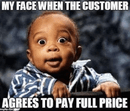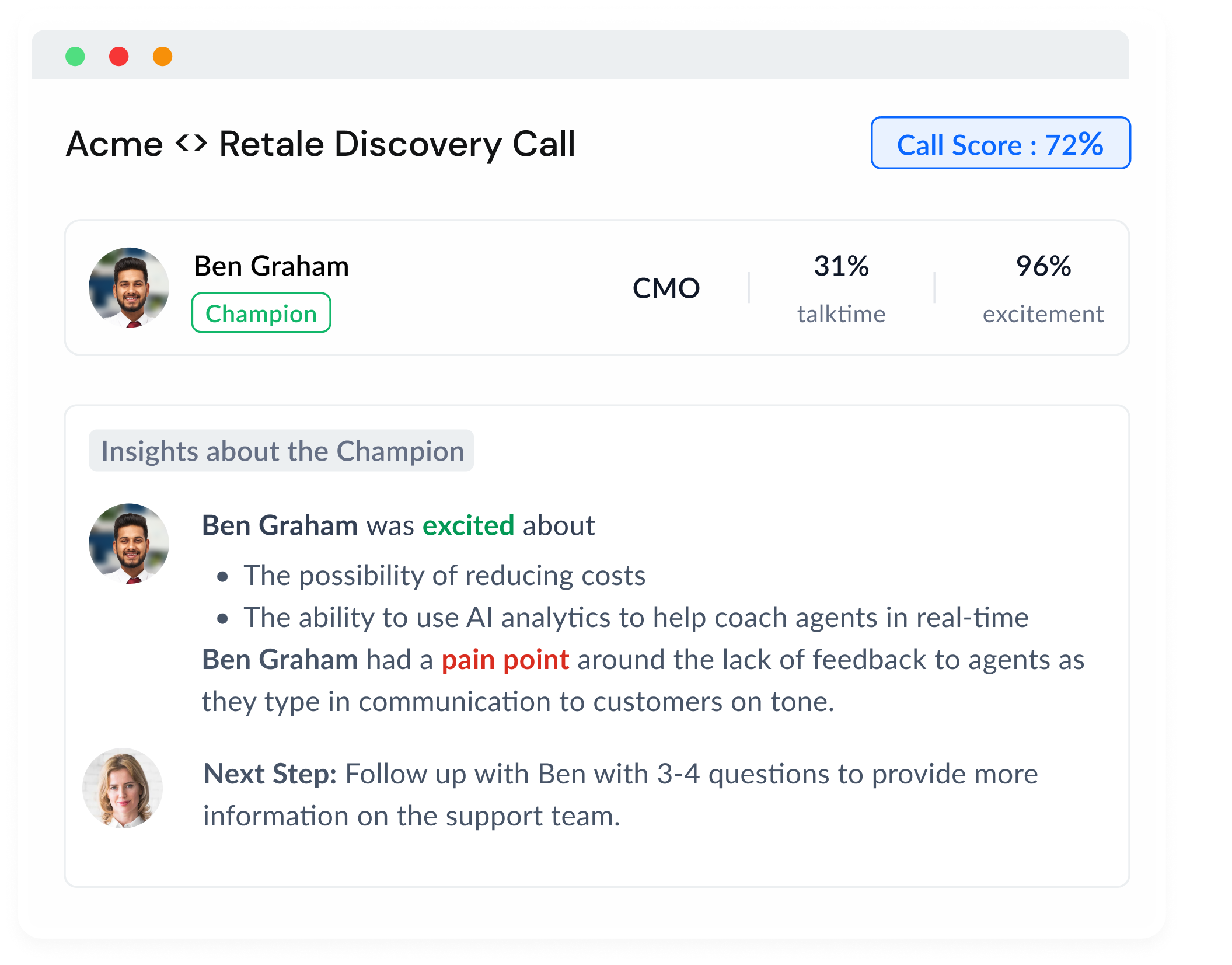Introduction: Importance of Understanding Pricing Psychology
Ever wondered why some products sell like hotcakes, while others gather dust on the shelves? It's not just about product quality, my friend, but also about understanding the mysterious world of pricing psychology. And you thought magic was only limited to Hogwarts, didn't you?
Dive with us into the depths of the mind-bending magic of pricing psychology, and let's explore how small tweaks in pricing and packaging can have a butterfly effect on buyer perception, decision-making, and, in turn, skyrocket your sales.
The Art of Price Optimization
What is Price Optimization?
Marvel's Doctor Strange might have the Time Stone, but as sales professionals, marketers, and business owners, you have the power of price optimization. In a nutshell, it’s the sweet science of setting the ideal price for your products or services to maximize sales revenue. It's like casting a spell that makes your customers go, "Eureka! That's the perfect price!"
But let's break it down and see what it really means to optimize your pricing.
Balancing Affordability and Perceived Value
Ever had a Goldilocks moment when setting the price for your product? You know, trying to find that price that's not too high, not too low, but just right. That's the art of balancing affordability and perceived value. Price your products too low, and your potential customers might think they're compromising on quality. Price them too high, and you run the risk of scaring them off faster than an overpriced haunted house attraction.
So, in the quest for the perfect price, finding the sweet spot between affordability and perceived value is crucial for maximizing those magical sales numbers.
Taking the Competition into Account
You know your product inside and out, but what about your competition? It's essential to keep an eye on those cunning competitors and see how they're pricing their products (or services). By comparing and differentiating your pricing from theirs, you position yourself strategically in the market, appealing to your target audience and giving them a reason to choose you over them.
The best place to start? Ask yourself, "Mirror mirror on the wall, who's the fairest of them all?" And by "fairest," I mean from a customer's perspective.
So, consider how you stack up against the competition and adjust your pricing accordingly to give your customers the irresistible reason to choose your product or service. It's like sprinkling that extra fairy dust to make your offer simply magical.
Psychological Pricing Strategies Explained
Time to pull back the curtain and unleash the mind tricks that make pricing psychology so enthralling. Let's uncover these tried-and-true strategies that have proven to influence buyers' decisions like some sort of Jedi mind control.
Charm Pricing: The Magnetic Force of the Number 9
You've seen it everywhere. Prices ending with .99, making that brand-new gadget appear cheaper than it actually is. It's charm pricing, and it has mesmerized buyers since, well, the invention of prices! With its inexplicable magnetic pull, the number 9 simply adds that irresistible touch to a price tag.
Studies have shown that charm pricing is more than just a visual gimmick – buyers are actually more likely to purchase products with prices that end in .99 compared to those with a round price. So go ahead, charm your wallet out of your customers with the magical number 9, and watch your sales grow.
Anchoring: Making Them Feel Anchored to You
What's more attractive, a luxury car for $60,000 or a luxury car for $60,000 that was initially priced at $80,000? That's the power of anchoring. By introducing a higher-priced item, or an original price, you make buyers feel like they're getting a fantastic deal, even though the car's final price is the same in both scenarios.
Think of anchoring as planting the seeds of a bargain, preparing your customers' minds to perceive your products as an amazing deal when compared to that higher-priced option. Just imagine them going, "Wow, I'd be crazy to pass up on this deal!"
Decoy Effect: A Clever Illusion for Better Decision Making
Ah, the art of deception. Think of this as a clever illusion - introducing an unappealing (or decoy) option to make your other options look incredibly attractive. Here's how it works: you offer three options – a standard package, a premium package, and a third option priced very close to the premium package but with significantly fewer features than the standard one.
By doing this, you're making the premium option look incredibly valuable and tempting in comparison to the decoy. Cue buyers gleefully exclaiming, "Wait a minute, I can get all these extra features for just a little more? Count me in!"
Implementing Psychology in Packaging
Now that we have established the principles behind the pricing psychology, it's time to learn how to put them into practice with your packaging. Your offering is a gift to the world, so go ahead and make it irresistible to your customers.
Tiered Pricing: A Well-Known Classic
Remember the last time you faced the dilemma of choosing between three different sizes of popcorn at the movies? That's tiered pricing in action. Offering multiple packages (tiers) creates a sense of customization, which increases the chances of people buying YOUR product at the price that suits them best. It's the perfect mind game to let your customers think, "Hey, they've got something for everyone, even me!"
Create the perfect package (tier) combinations by bundling different features and price points, and watch as indecisive shoppers transform into happily committed customers.
Bundling: The Art of Making It a No-Brainer
We all know how bundles work – you group together several products or services and offer them at a better price than if purchased individually. But why is it so effective? It's because bundling increases perceived value, simplifies the decision-making process, and gives your customers that warm fuzzy feeling of scoring a fabulous deal.
Want your customers to repeatedly tell themselves, "I'd be foolish not to take advantage of this bundle!"? Aim for strategic product combinations that cater to their needs, desires, or specific use cases, and voila, your bundles become a no-brainer!
The Lure of Scarcity and Exclusivity
Ever found yourself rushing to buy something just because it's available for a limited time? That's the power of scarcity and exclusivity. By offering limited-time deals, promotions, or limited features, you create a sense of urgency that pushes your customers to take action.
With the ticking clock of scarcity looming over their heads, they're more likely to think, "If I don't buy it now, I might miss out on this amazing offer!" So don't be afraid to sprinkle in some scarcity and exclusivity into your pricing strategy – the results can be magical.
Learn from the Masters: Real-Life Examples
If you're still unsure about the power of pricing psychology, let's explore a few examples from the titans of various industries. These brands have not only survived but thrived by implementing psychological pricing strategies with grace and precision.
Apple: Polishing the Art of Simplicity
Ah, the apple of everyone's eye (pun intended). The tech giant's pricing strategy for its iPhones and iPads has been a subject of admiration and study for years. Apple uses a combination of charm pricing (like $999 for an iPhone) and anchoring. By showcasing a lineup of products with incremental price jumps and neatly rounded features, Apple makes it incredibly simple for customers to justify that extra expense – "It's only a $200 difference, and I get double the storage!"
The key takeaway here? Keep it simple, and your customers will reward you with their loyalty (and, of course, their wallets).
Amazon Prime: The Bundle of Joy That Keeps on Giving
When you think of something for everyone, Amazon Prime invariably comes to mind. Boasting a multitude of services in one neat package, Amazon Prime expertly combines bundling, anchoring, and exclusivity to paint a picture of unparalleled value.
With one-price membership giving members access to fast shipping, streaming, shopping deals, and more, Amazon Prime instantly becomes an attractive option – "Just $__ per month for all of these perks? Sign me up!"
Tesla: The Luxury Made Attainable
The automotive world is no stranger to the magic of pricing psychology. Enter Tesla – the electric car company that has turned the luxury market on its head. How did they achieve such a feat?
Tesla offers various pricing options along with a compelling combination of incentives and urgency to persuade customers to choose their premium cars. By introducing cheaper, lower-spec models as anchors followed by limited-time promotions, exclusive upgrades, and the thrill of early access, Tesla has effectively used psychological pricing strategies to increase demand and strengthen brand loyalty.
Conclusion: Unleashing the Power of Pricing Psychology
And there you have it – the mind-bending magic of pricing psychology, revealed and demystified. By understanding the art of price optimization, implementing psychological pricing strategies, and learning from the masters, you too can experience the wonders of skyrocketing sales.
So go forth, channel your inner sorcerer, and sprinkle a little magic on your pricing and packaging. Turn these concepts into realities in your own sales efforts and watch as you enchant your customers with irresistible offers that ultimately lead to sales success.
As the wise Albus Dumbledore once said, "Words are, in my not-so-humble opinion, our most inexhaustible source of magic." Now, let the magic of pricing psychology be the sorcerer's stone that paves the way to your profits.















.png)





